The longest flight ever undertaken by humans took place in 1958, lasting a total of 64 days, 22 hours, 19 minutes, and 5 seconds without landing for refueling. They covered a distance of over 241,400 km, approximately six times the circumference of the Earth.
Humans have achieved some incredible feats throughout history, but nothing compares to the world record set nearly 70 years ago for the longest flight in history, which lasted 65 days. Even more fascinating is the story behind how this record was established, along with the unexpected results that followed.
Hacienda Hotel Las Vegas
It all truly began at the Hacienda Hotel in 1958 when it was newly opened. At that time, Las Vegas was still in its developmental stage. As a result, the hotel needed to do something to create public attention and attract tourists from other states. The hotel owner’s idea was to promote their business through a daring stunt.
They would have a pilot fly an airplane named after the hotel and attempt to break the world record for flight duration at that time. The previous record was set in 1949 at 47 days of flying without landing. This mission would be carried out by World War II veteran pilot Robert Timm.
Timm was awarded $100,000 to organize the event, which also served as a fundraising activity for cancer research. This made it one of the first major fundraising events for cancer research in history.
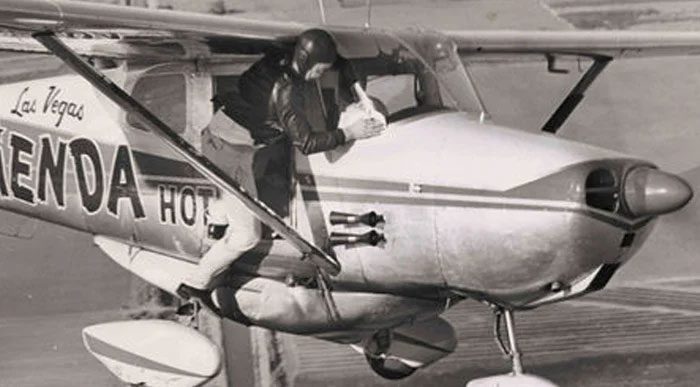
Mission carried out by World War II veteran pilot Robert Timm.
Cessna 172
To break the previous record, meticulous preparation was essential. In 1958, aviation technology was rapidly advancing, but a more modern aircraft did not necessarily mean it was better suited for this particular mission.
An ideal aircraft for breaking the world record had to be easy to control, easy to fly, and consume minimal fuel to reduce the risks associated with in-flight refueling. Above all, it had to be mechanically reliable. This is why Timm chose the Cessna 172, a relatively new aircraft at that time.
The remaining funds were used to modify the aircraft with the necessary tools for the job. Modifications included a mattress for sleeping and a small steel sink for personal hygiene. However, most internal accessories were removed to save weight, and a rudimentary autopilot system was installed.
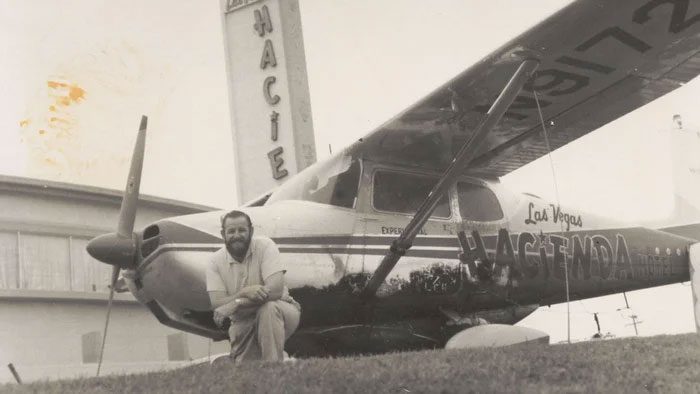
Robert Timm chose the Cessna 172, a relatively new aircraft at that time.
How to Refuel Without Landing?
Today, most modern military aircraft are equipped with the capability to refuel mid-flight without risks, but at that time, such technology was not yet perfected, and the Cessna 172 could not fly at high altitudes.
In 1958, there had been some mid-air refueling experiments, but there was no method to convert a Cessna 172 into an aircraft capable of mid-air refueling.
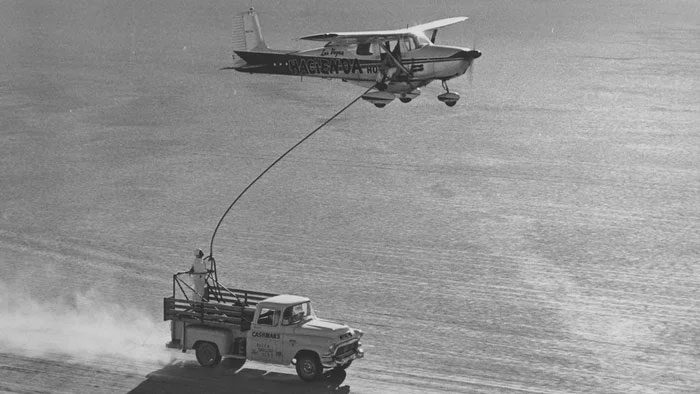
Refueling the plane.
Therefore, they set up an additional tank that could be filled with fuel from a ground vehicle. When refueling was needed, a hose would be dropped down, and the aircraft would lower its altitude, moving very slowly until the truck arrived, using a pump to transfer fuel into the plane.
This was extremely challenging as sometimes it had to be done at night, which required precise flying.
It Took Four Attempts to Break the Record
During the first flight, things did not go as expected, and it took four attempts for the mission to finally break the previous record. The issue encountered in the three prior attempts was that the aircraft broke down. The longest duration of the three attempts was only 17 days. Coincidentally, during the third attempt, the 1949 record was broken by another group also trying to achieve a similar feat, with 50 days and a few hours.
Despite this news, Timm did not give up. After optimizing the aircraft once again, Timm believed he needed an additional co-pilot with similar experience. This person had to be capable of fixing the plane in flight if any issues arose. Thus, John Cook, an experienced aircraft mechanic, was chosen as the co-pilot.
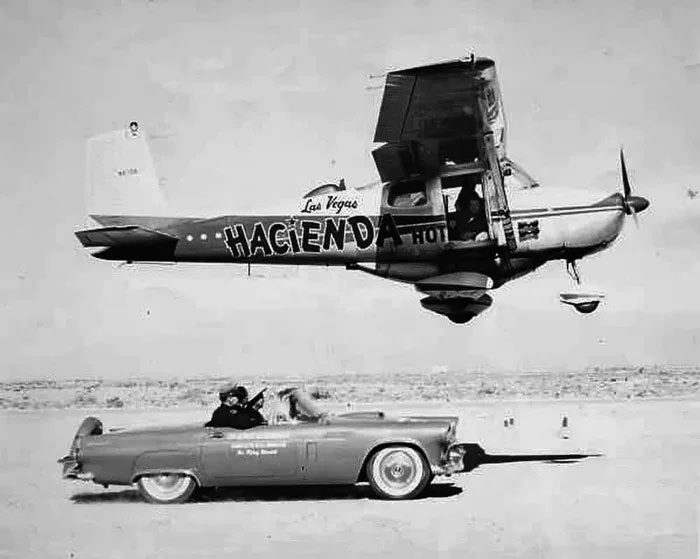
The flight started smoothly, and both spent Christmas in the air.
Both began the fourth attempt on December 4, 1958, from McCarran Airport in Las Vegas. To show everyone that they would never land during the journey, they painted the airplane’s wheels white. If they landed for any reason, the paint would peel off the wheels, and that would be considered a failed attempt.
The flight started smoothly, and both spent Christmas in the air. When they refueled around the California-Arizona border, they purchased supplies and food, in the form of dishes from the Hacienda’s restaurants that had been ground down to fit into thermos containers, making it easier to send them up to the aircraft.
When they needed to use the restroom, they would do so into plastic bags and scatter them across the desert.
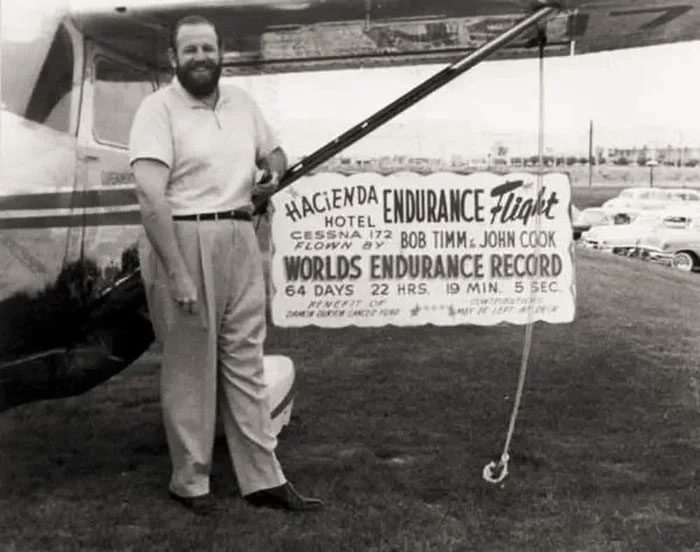
During 65 days in the air, many things broke down, but the engine kept running.
65 Days in the Air
During the 65 days in the air, various things broke down on the aircraft, but importantly, the engine continued to operate, which was all they needed, especially after day 50.
Even though they had broken the world record newly established in 1958, they wanted to ensure that the world record they set would not be easily surpassed.
Therefore, they decided to fly for an additional 15 days before landing at McCarran on February 7, 1959, after flying non-stop for over two months and covering 150,000 miles.
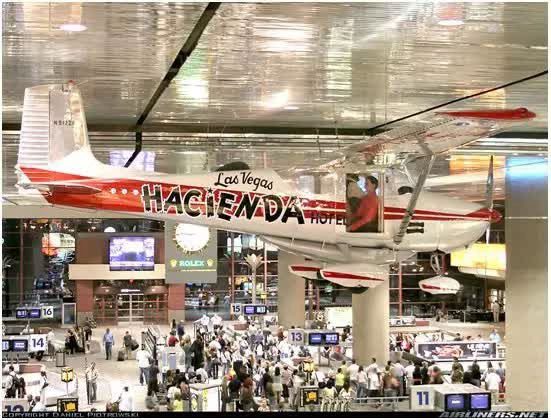
The aircraft is mounted on the ceiling in the baggage claim area at McCarran Airport.
Today, the aircraft used to set this record can be seen mounted on the ceiling in the baggage claim area at McCarran Airport. Even to this day, no one dares to attempt to break this record.


















































